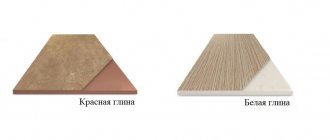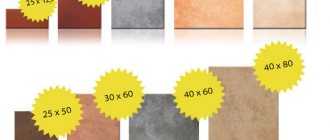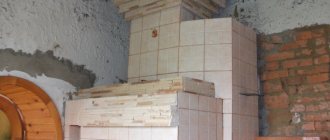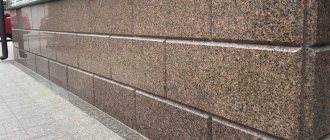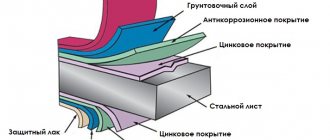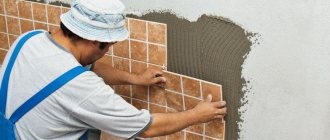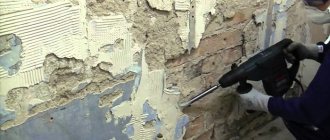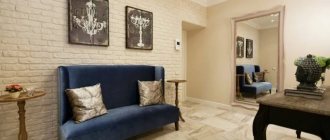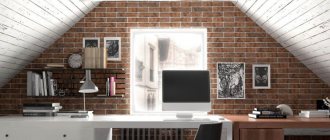The cost of ceramic wall tiles depends not only on the manufacturer and manufacturing technology, but also on the construction of a dealer network. The price of ceramic wall tiles in the official online store “Floor for the Home” is cheaper than in most construction hypermarkets and on other sites.
When using ceramic tiles for interior wall cladding, not only practicality is pursued, but also beauty. Modern ceramics is an art with unlimited imagination of the artists who create it. Even simple ceramic wall tiles at cheap prices look much better than any other coating, and for the bathroom this is generally the best solution. By supporting partnership offers with the majority, the best price of ceramic wall tiles per m2 in Moscow is offered on the official website of the online store.
Types of ceramic tiles
The raw materials for making ceramic tiles include red or white clay. At the same time, white clay tiles are more durable and durable.
Based on strength and appearance, ceramic tiles are divided into several varieties:
Pressure glazed
This is a ceramic tile familiar to many. A layer of liquid glass glaze applied to a dense, low-porous surface gives the tile an aesthetic shine and attractive appearance and increases its resistance to damage. Used in cladding walls and floors. There is a wide selection of this material on sale with translucent or opaque enamel of glossy, matte and embossed texture. The range also includes floor collections with anti-slip surfaces. In the range of these tiles, a special place is occupied by small-sized mosaic elements for creating floor compositions and wall panels.
Double fired tiles (Bikotura)
As a result of double firing technology, the tiles acquire a perfectly smooth texture and an almost mirror-like gloss. During the repeated firing operation, performed after the first glaze, fine bubble pores are eliminated from the clay structure and it is given ideal dimensions. During the reglazing process, the surface of the tile is decorated with prints. Widely used in wall and floor cladding.
Clinker tiles
This material, due to the peculiarities of manufacturing technology, is produced with an uneven edge. It is used for finishing floors, walls, and fireplace groups. The surface, which is heterogeneous in texture, can imitate brickwork, natural stone or wood.
Glazed or unglazed, it gives the interior a noble or extravagant aristocratic aesthetic. Using clinker tiles in the interior, you can easily create design elements in the styles of “loft”, “country”, “neo-Gothic”, “minimalism” and of course “high-tech”.
Cotto tile
A characteristic feature of such tiles is the uneven texture of the surface and edges. In most cases it has natural shades.
The application of enamel prints and engravings on its surface is carried out only by hand or by drawing. The emphatically individual design of each collection of Cotto tiles fits perfectly into interiors of ethnic and rural styles. These tiles are widely used for flooring.
Porcelain tiles
Due to the high level of its strength characteristics, it cannot be replaced in high-traffic areas. For interior decoration of residential buildings, it is often used in large areas (halls, guest areas).
The front surface of porcelain tiles for residential premises can have a matte or perfectly polished mirror-glossy texture. Such material, as a rule, has larger sizes, up to large-format, and is available for both seam and seamless installation.
Ceramic tiles come in a variety of shades and prints, including photo printing, and pair well with borders and decorative elements.
Features of using ceramic tiles for wall cladding
Wall decoration is usually the most decorative, as it attracts much more attention than the floor or ceiling. However, even in this case, it is necessary to pay attention to a number of other factors in order to find the optimal material for each room.
The wall tiles are marked with the image of a human hand. It usually has a smaller thickness, while allowing higher porosity, lower resistance to mechanical damage and a wide variety of surface treatments.
A specialist will tell you how to choose tiles for wall cladding in the video below:
Specifications
- Water resistance - the water absorption rate for ceramics ranges from 0.05% for porcelain stoneware to 15–18% for porous cottoforte. Accordingly, different types of ceramics are preferable for different rooms. There are no restrictions in living rooms, as well as in offices or public rooms.
- For a bathroom, and especially a swimming pool, you should prefer tiles with lower water absorption - cotto, for example, majolica.
- In the kitchen, glazed tiles or a material with low porosity - clinker, for example, are also preferable.
- And for special office spaces, special types of ceramics are used.
Ceramic wall tiles
Appearance
The requirements for the appearance of wall tiles are much higher, so this factor will also have to be taken into account.
- Shade accuracy - on the marking you can find an image of conventional masonry with varying degrees of shading. This means that tiles in the same batch can change shade. In most cases, this is quite acceptable, for example, for cotto and terracotta, which have the natural color range of clay. But in the case of tiles, large color differences are not allowed.
- Grade - during firing, the dimensions and shape of the workpiece change quite a lot, and for the appearance both the geometric accuracy of the contours and compliance with the dimensions are very important. Grade indicates the number of imperfect tiles in a batch. The better the finish needs to look, the higher the grade you should choose.
We will talk about the dimensions according to GOST of ceramic tiles for interior wall cladding below.
Characteristics of ceramic tiles
Any finishing material is characterized, first of all, by mechanical strength. For ceramic tiles, this criterion is complex and includes the following parameters:
Wear resistance class
- PEI 1 - bathrooms and sleeping areas;
- PEI 2 - for sleeping areas, bathrooms, guest rooms, loggias;
- PEI 3 - for kitchen areas, hallways and balconies.
- PEI 4 - for premises with medium-high traffic, for example, front entrances, trading floors, offices.
- PEI 5 - for high traffic areas, such as shopping centers and airports.
Of the five wear resistance classes, the first 3 classes are optimal for an apartment
Moisture absorption and frost resistance
The type of tile molding is indicated by the letters A - extrusion, B - pressing.
- AI and BI - frost-resistant, with moisture absorption up to 3% (for outdoor use or use in rooms with high moisture levels);
- AIIa and BIIa - medium frost-resistant, with moisture absorption up to 3-6%;
- AIIb and BIIb - medium frost-resistant, with moisture absorption up to 6-10%;
- AIII and BIII - only for indoor cladding, with moisture absorption more than 10%;
For bathrooms, kitchen areas, loggias or balconies - AI, BI or AII and BII, and for corridors, guest and sleeping areas - AIII and BIII.
Chemical resistance
Of the five classes, “A” and “AA” are most suitable for finishing living space. For a bathroom you can take B or A, and for a combined bathroom - AA (the highest level of resistance).
Caliber
The caliber of the tile is an important indicator; it is indicated on the packaging in numbers from 0 to 5, or in dimensions in mm. When ceramic tiles are made, they are fired, and each firing produces a different size. For example, a manufacturer wants to obtain tile dimensions of 40X60 cm, but as a result of firing, the resulting tile is 39.5X59.8 or 39.3X59.7. Then a special laser measures and sorts the tiles by size. All tiles, for example 39.3X59.3, are sorted with a value of 1, and 39.5X59.5 with a value of 2. Usually the difference between the calibers is 1 mm. The closest to the nominal size will receive 0, there are also values 1,2,3,4,5.
When purchasing ceramic tiles, be sure to look at the size indicator on the packaging; it must be the same for all tiles, otherwise it will create problems when laying them.
Surface hardness
The stability characteristics of the enamel surface of ceramic tiles (tested under test conditions by deliberate scratching with natural minerals) for an apartment should be in the range from 3 (calcite) to 9 (corundum).
Variety
The assortment of ceramic tiles is indicated by the percentage of defects (including scratches and microchips):
- No more than 5% - 1st grade, packaging is marked in red;
- From 5 to 25% - 2nd grade, packaging is marked in blue;
- Over 25% is grade 3, marked in green (as a rule, it is not supplied for sale through retail chains).
Majolica tiles
Majolica is a glazed tile with a porous colored base. It is made by pressing and is characterized by increased strength. The raw material is a mixture of clay, sand, carbonate and iron oxide, due to which the body of the tile has a pinkish tint. Only colored glaze is used. Majolica with a transparent coating is not produced. Majolica undergoes two separate firings: the first for the body of the tile, the second for the enamel.
Thanks to this treatment, the tiles are perfectly smooth, shiny, without bubbles or cracks on the surface. The most popular sizes of majolica are 15 × 15, 15 × 20 and 20 × 20 cm. Majolica is a porous tile. Its water absorption is 15 – 20%. This is quite a lot, so this tile is not suitable for rooms with high humidity (bathroom, toilet, etc.). It is used to line the walls of residential premises with low humidity.
If the thickness of the adhesive layer should be less than 1 cm, it is more convenient to distribute the adhesive over the base with a notched trowel to reduce product consumption. If the planned thickness of the adhesive layer is within 1-1.5 cm, it is more convenient to use a regular spatula.
Advantages of ceramic tiles
Ceramic tiles are in great demand and widely used due to their inherent advantages:
- Antistatic. Ceramic tiles, due to their chemical composition and structure, prevent the accumulation of electrical charges and, in a dry state, do not serve as an electrical conductor.
- Fire safety. Ceramic tiles are included in the line of non-combustible materials. At high temperatures and in close proximity to an open flame, it does not ignite, does not collapse and does not emit toxic substances.
- Environmentally friendly. Ceramic tiles are harmless to humans and the natural environment due to the inclusion of natural components in their composition (sand, clay, spar, metal oxides).
- Biological stability. The structure and composition of the material do not contribute to the breeding of small insects, bacteria and other microorganisms on the surface of the tile.
- Waterproof. Ceramic tiles do not absorb moisture and prevent its passage to the materials of the structures themselves. Does not lose appearance when exposed to water.
- Good thermal conductivity. Ceramic tiles heat up in a short time and are ideal for finishing the surfaces of modern heating systems such as “warm floors”.
- High wear resistance . The surface layer of the tile is not destroyed by friction with abrasives and chemicals.
- Frost resistance. Ceramic tiles are suitable not only for decorating indoor spaces, but also for finishing facades, terraces, gazebos and balconies.
- Easy to clean. Cleaning the surface of ceramic tiles does not require the use of strong chemicals. Cleaning from grease and regular washing with plain warm water is enough.
Choosing ceramic tiles
It is advisable to select ceramic tiles for a room not only in accordance with its purpose, but also in accordance with its dimensions. Small-sized tiles visually give a small room more volume, while large-sized tiles make a spacious room more compact.
Having chosen a certain collection, you need to visually verify the high quality of its appearance:
- The clay surface at the ends should be partially covered with glaze on the front surface.
- The front surface of the tile should not have depressions, smudges, cracks or other deformations.
- Applying the front side of one tile to the back side of another should ensure a tight seal. The presence of a gap between them indicates the concavity of the tiles.
- The edges of the tiles should form an angle of 90. Skewed edges will seriously complicate the laying of the tiles.
- Tiles from the same collection from different batches may have deviations in tone or size (caliber). The tone indicator is often indicated on the packaging in Latin letters.
- When determining the number of packages, you should be guided not only by the area, but also by the method of laying the material.
What you need to lay tiles
To cover walls with ceramic tiles, you need the following tools:
- level;
- plumb line;
- ruler;
- roulette;
- a set of rubber spatulas for grouting and serrated spatulas for applying glue;
- pencil or felt-tip pen;
- tile cutter or grinder;
- drill;
- set of feather drills and ring bits;
- plaster spatula;
- hard brush and sponge;
- spacious container for mixing the solution;
- brushes and rollers for preliminary priming of walls.
Materials that will be useful:
- the tile itself;
- additional elements (if they are provided for in the design project);
- a tiled border that will take the place of the baseboard;
- tile adhesive;
- plastic cross-shaped dividers;
- external and internal corners;
- soil for treating walls;
- waterproofing agent for treating screeds in the bathroom and kitchen.
Which ceramic tiles to choose for the floor
The flooring in an apartment suffers the most wear and tear. Therefore, when choosing ceramic floor tiles, first of all, preference is given to the following collections:
- wear resistance class not lower than PEI 3;
- maximum resistance of the coating to chemical environments (class “AA”);
- with moisture absorption up to 3%.
In addition, the floor covering should not slip. The ideal option is tiles with an anti-slip effect.
Having decided on the characteristics of the material, you need to select tiles from the collection, the design of which will successfully fit into the style of the interior. Due to the fact that glossy surfaces become dirty most easily when in constant contact with shoes, it is better to choose ceramics with a matte texture for floors with frequent traffic.
To make the floor surface look more original, it can be decorated with tiles that differ in shape or by shifting elements of the usual square shape relative to each other.
It is advisable to select the size of the tiles in proportion to the dimensions of the space. For small rooms it is worth giving preference to smaller tiles, and for spacious ones - to larger tiles, even large-format ones. In addition, collections with large prints will give spacious interiors an even greater effect of volume.
Finishing tiles made of decorative material
Decorative stone tiles for interior decoration may well be made from artificial conglomerate. Such elements look natural and have almost the same set of properties and characteristics.
The photo shows an interior made using decorative material
Properties and Features
Decorative facing material is distinguished by:
- A huge range of colors, shades and textures;
- Practicality and inability to absorb pollutants;
- Resistant to moisture and low temperatures;
- Amazing strength;
- Resistance to temperature changes that are endured without deformation.
Note! This product is primarily chosen for finishing rooms with aggressive environments, the kitchen, with its temperature changes, the bathroom, with its constantly high humidity, etc.
The production of such decorative material is carried out from acrylics and synthetic substances with the addition of stone chips.
In the modern market, decorative finishing can be provided with the following types of surfaces:
- Matte;
- Glossy;
- Convex;
- Concave;
- Porous;
- Torn.
All of these surfaces have a protective layer, the only difference being that the glossy versions are treated with a protective substance with a shine effect, while the rest are treated with a substance that does not shine after drying.
Decorative stone on the walls
Surface preparation
As with natural stone tiles, the walls must be prepared and leveled using plaster or plasterboard structures. Decorative cladding is quite light, so, without a doubt, you can choose plasterboard cladding.
But if you still decide to plaster, then you don’t need to reinforce the surface, which means you won’t need reinforcing mesh. Next, apply a primer to the walls and allow the surface to dry.
Facing
During the cladding process the following instructions must be followed:
- Prepare a cement or adhesive solution;
- Installation on walls is carried out in the direction from the very bottom up;
- The seams are treated with putty.
Which tile to choose for the kitchen?
For the most part, in the food preparation area, ceramics are used as floor finishing, as an apron for the work area, and on the wall behind a furniture set with appliances.
For the apron of the work area, it is necessary to be guided by the criteria of moisture absorption and chemical resistance, since this element of the kitchen design is often in contact with condensate vapor and moisture.
Therefore, it is preferable to choose a material with a coating resistance class to chemical environments “AA” and moisture absorption up to 3%.
Ceramics for finishing the floor and apron must appear in a single stylistic ensemble with the rest of the interior elements. Their combination is acceptable both in shades of the same color and in contrasting ones.
When choosing a ceramic tile design for a backsplash, you must follow a number of rules:
- Tiles with a smooth glossy texture are superior to matte or textured ones in terms of ease of cleaning.
- The glossy surface is an excellent reflector of light, so tiles with such a surface can be considered an additional element of lighting for the kitchen interior.
- Tiles of natural light brown shades hide dirt better than others.
- White tiles will suit interior elements of any shade.
- To prevent a plain apron from seeming boring, it can be diluted with inserts with decorative patterns such as:
- panel;
- printed tile inserts;
- borders and friezes;
- pencil.
The design of the tiles used to decorate the part of the wall hidden behind the kitchen furniture can be absolutely anything. The main task of ceramic coating in this area is to ensure fire safety and hygiene of the surface.
Classification by type
Since the wall cladding is not subject to mechanical stress, and this is considered the most destructive factor, all possible types of CP are used for finishing.
- Majolica is a double-fired tile coated with colored opaque enamel. Both single-color CP and patterned ones are equally popular. These wall tiles are exceptionally decorative, have a brilliant glossy surface and the widest range of colors you can imagine.
- Terraglia is made only from white clay, and therefore the base here is always very light. The design here is applied to the surface of the ceramic and then covered with a transparent glaze. A very beautiful, sophisticated version of the KP.
- Faience - both soft and hard faience are used for wall decoration. Earthenware has a white base and is covered with a transparent glaze. The pattern is applied to the ceramic. Although relatively weak, the material is characterized by low porosity and water absorption, so it is excellent for bathrooms and swimming pools.
- Cottoforte - differs from majolica in greater strength, since several types of clays and fireclay are added to the composition of the initial raw materials. Cottoforte is also used for flooring.
- White and red single-fired tiles are relatively porous, but characterized by high strength: collections are available for finishing both floors and walls. The properties of the products are the same, the manufacturing technology is the most affordable, and this material has the most affordable cost.
The difference in the red and white base is expressed in the color of the enamel: light glazes are applied to the white base, dark glazes are applied to the red base. This is not important, but on a red base, a thicker layer of light enamel will have to be applied to disguise the color of the body.
- Cotto - or Tuscan , red clay tiles produced by single firing. It is characterized by low porosity and frost resistance. The product is not glazed. Its main attractive feature is the natural color range of the clay and its slightly rough surface. This is the most ancient technology for producing ceramic tiles.
- Clinker is a high-density, low-porosity ceramic, most often imitating brick or natural non-cladding stone. The color depends on the clay and coloring pigment and is the same throughout the entire depth of the product. Clinker can be unglazed, which is more common, or coated with enamel, if in addition to bright color and design, high strength is also required.
- Porcelain tiles – red gress and porcellanato gress. The first is made from red clays, the second from white clays. The technology requires a very high firing temperature and specific raw materials. The material is characterized by exceptionally low water absorption - 0.05% and strength exceeding the strength of natural granite or basalt. Gress is extremely wear-resistant, not afraid of chemically aggressive substances, insensitive to frost, and so on.
The color range of porcelain stoneware is determined by coloring pigments - this product is not glazed. Therefore, most often the material reproduces the pattern and color of stone, but it can just as successfully imitate wood. Matte, satin, polished, structural and even relief porcelain tiles are available.
Wood-look wall tiles for living room decoration
Which tile to choose for the bathroom?
Of all the rooms in the apartment, the bathroom, based on its purpose, is the wettest room. Therefore, here, ceramic tile cladding requires the floor, walls, as well as the outer surface of the bathtub or shower enclosure.
The tiles in this room, regardless of the surface being tiled, must have the highest moisture absorption class - up to 3%. At the same time, preferences for the style of bathroom design should not come at the expense of the strength characteristics of the selected material.
When choosing ceramic tiles for decorating this wet area of the apartment, you need to take into account the following recommendations:
- For the floor, it is more advisable to give preference to tiles with a matte texture in order to eliminate injuries from the danger of slipping.
- Tile with a deep relief texture for the floor should not be considered due to its active contamination.
- It is better to cladding the walls and outer surfaces of shower corners and bathtubs with ceramics with a glossy texture in order to reduce the time of contact with water and ensure ease of cleaning.
- For walls, it is more rational to choose tiles whose texture will not complicate its joining according to the relief and pattern.
- Bathroom walls decorated in dark colors make the room visually less voluminous.
- When choosing a color scheme, you should give preference to a light palette for the upper tier of the room and a dark one for the lower part of the walls with a transition to the design of the floor.
- It is better to abandon multi-colored material in favor of a combination of light and dark shades of a single color scheme, diluted with decorative elements.
Decorative wall tile materials
Decorative tiles, which are used to decorate walls in a room, can be made of different materials. These are tiles or plaster, natural stone or brick, ceramics and so on. All materials and varieties have their own unique characteristics and differ in price, scope of application and characteristics. Let's take a closer look at the main types.
There are many methods and materials for making decorative tiles.
Tile
Decorative tiles can be incredibly beautiful, and the variety of designs, colors and shapes is amazing. The tile always shines beautifully and looks neat, it is pleasant to touch, light is reflected in it, and the space always looks well-groomed and rich. This is an ideal option for a bathroom, kitchen, as well as for decorating a cafe, for example, in an oriental style.
Varieties of tiles allow you to lay them both on the floor and on the wall.
Often, one collection contains the main “background” tile and decorative elements for it - inserts with a pattern or three-dimensional decor. This is very convenient, since you don’t need to think through the design and look for something to combine decorative inserts with, the whole ensemble looks harmonious and very successful. Decorative tiles can be of different sizes, with voluminous textures, waves, floral elements, ornaments, sparkles and flat images.
The variety of decorative tiles allows you to use them in different rooms.
This is a relatively inexpensive but high-quality option. In addition, such tiles are easy to install and maintain, they are durable and always look great indoors.
Plaster
Gypsum tiles have a special look. It always creates a feeling of some antiqueness, high cost, and unique design. To choose it, you need a designer's eye and good artistic taste: if you have imagination, you can create a composition around one large slab with a three-dimensional pattern that will look unique and inimitable.
Gypsum decorative tiles have a wide range of applications.
This design may be more expensive and more difficult to maintain, but the view is truly impressive. Gypsum boards can be used to decorate a restaurant, hotel, salon, and it will look great in your home.
Mistakes when choosing ceramic tiles
- To ensure that the floor surface does not slip and looks like new for a long time, it is better not to use a glossy texture for its finishing.
- Rooms with high humidity should not be finished with tiles with a frost resistance rating of more than 3%.
- In order for the surface of the floor or wall to look as complete as possible, the choice should be made in favor of tiles laid using seamless technology.
- To prevent the room from looking boring, you should avoid tiling it in the same color.
- The tiled surface should not be overloaded with many decorative elements.
- When calculating the number of tile packages, be sure to personally depict its layout to scale, choosing the optimal installation method, and reserve at least 10%.
- When grouting tile joints, it is better to choose a tone that is as close as possible to the tone of the tile itself.
Correctly chosen ceramic tiles can, without requiring repairs, protect the surfaces of structures from damage for decades and delight the owners of the premises with their attractive appearance.
